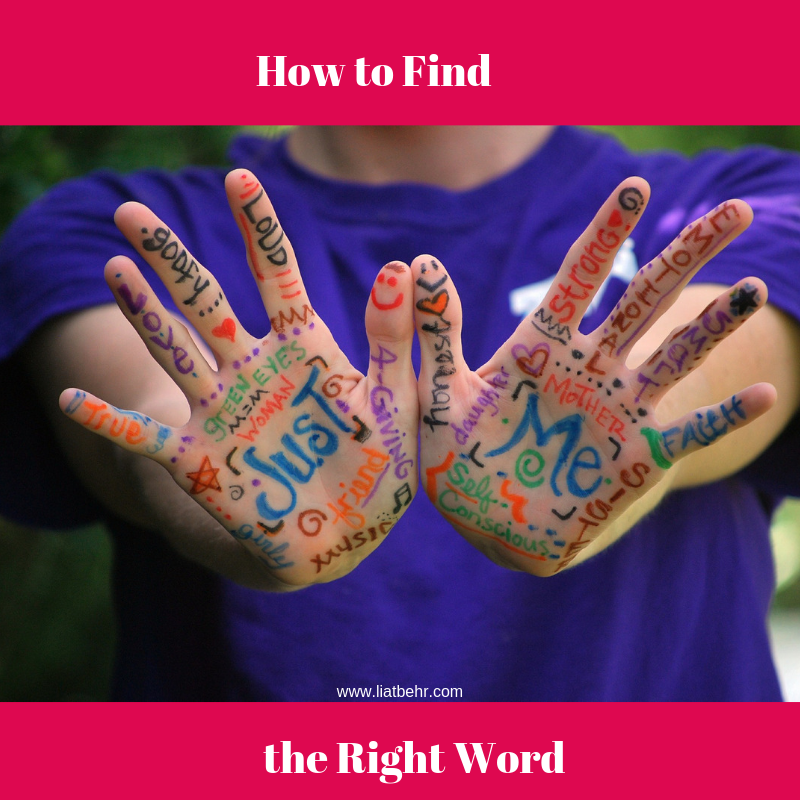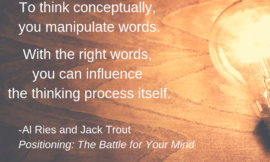We all communicate using words. But as a copywriter, it’s my passion and my purpose to find the right words.
What sets copywriters apart from other professions is that companies pay us a lot of money to create powerful messages that have impact and compel action.
So how do we do it?
I can’t speak for other copywriters, but here are 5 tools and tricks that help me to find the right words to create powerful messages:
1. Wordstorming
Wordstorming is what I call my brainstorming process that’s exclusively for words. As a copywriter, the first things I need to understand are: the industry I’m writing for, my target audience and words competitors are using. Often, before starting to write anything, I’ll create my own well of words from which I’ll draw from.
As an example, if I’m writing about a series of skin care products in which my client wants to emphasize their natural ingredients, I might start with the word “natural.” I’ll then use the following steps to create my vocabulary for the project:
i. Watch videos that relate to nature
Think Natural Geographic videos.
ii. Watch commercials about natural skin products
iii. Read articles about natural skin care products

2. Rhyme Zone
Rhymes are great at making things stick (but don’t use it too often!). When looking for the perfect rhyming word, my go-to site is Rhyme Zone. I’ll get a list of rhyming words that’s broken down by syllables. I’ll also get a list of words that almost rhyme. The list of “words and phrases that almost rhyme” may help me to rethink the words I’ve chosen, and help me start the writing process again using different words that will create a snappier and more compelling rhyme.
3. Google
Yup. Good ole’ Google. Sometimes I come across a term I’m not familiar with. It could be industry jargon. But it could also be that whoever wrote the initial copy didn’t bother doing the research to figure out what the real term is. More often than not, it’s worth checking. I’ve encountered countless errors in marketing materials. Especially when the materials in English were translated from a different language. If you type in a term that’s supposed to be an industry term but either you can’t find a match or the match you find doesn’t make sense, it means you have work to do. The first step is understanding the term that you’re looking for. The next step is to try different combinations of words until you find the right term. This could be time consuming. But it’s also a sure way to become your client’s hero.
4. Print Dictionary
I’m willing to bet every single one of us uses online dictionaries. But if you’re a copywriter, you should also be using a print dictionary. There are tons of reasons to use a print dictionary. The number one reason I use a print dictionary is because when you’re looking for the right word, opening a print dictionary opens many more possibilities; from serendipitously opening the dictionary and finding a more vivid noun (verb, adjective et al) to creating exciting word combinations that can only happen from randomly opening the dictionary.
The dictionary I use? The American Heritage Dictionary.
Why? Because it was recommended by Peter Bowerman in The Well-Fed Writer. In Peter’s words – “lively, topical, fresh. The best dictionary out there.”
5. Print Thesaurus
I don’t care what anyone says. An online thesaurus doesn’t cut it. With the development of AI maybe one day I’ll be wrong. Right now, 2019? You need a print thesaurus to help you nail that description.
I have been a word lover since I was a kid and have owned many thesauruses. None come close to The Synonym Finder. There’s a great selection of words for every entry and sometimes I’ll even be prompted to think in different and more exciting directions of how I can describe a product in a way that will make the consumer want to buy it this second.


